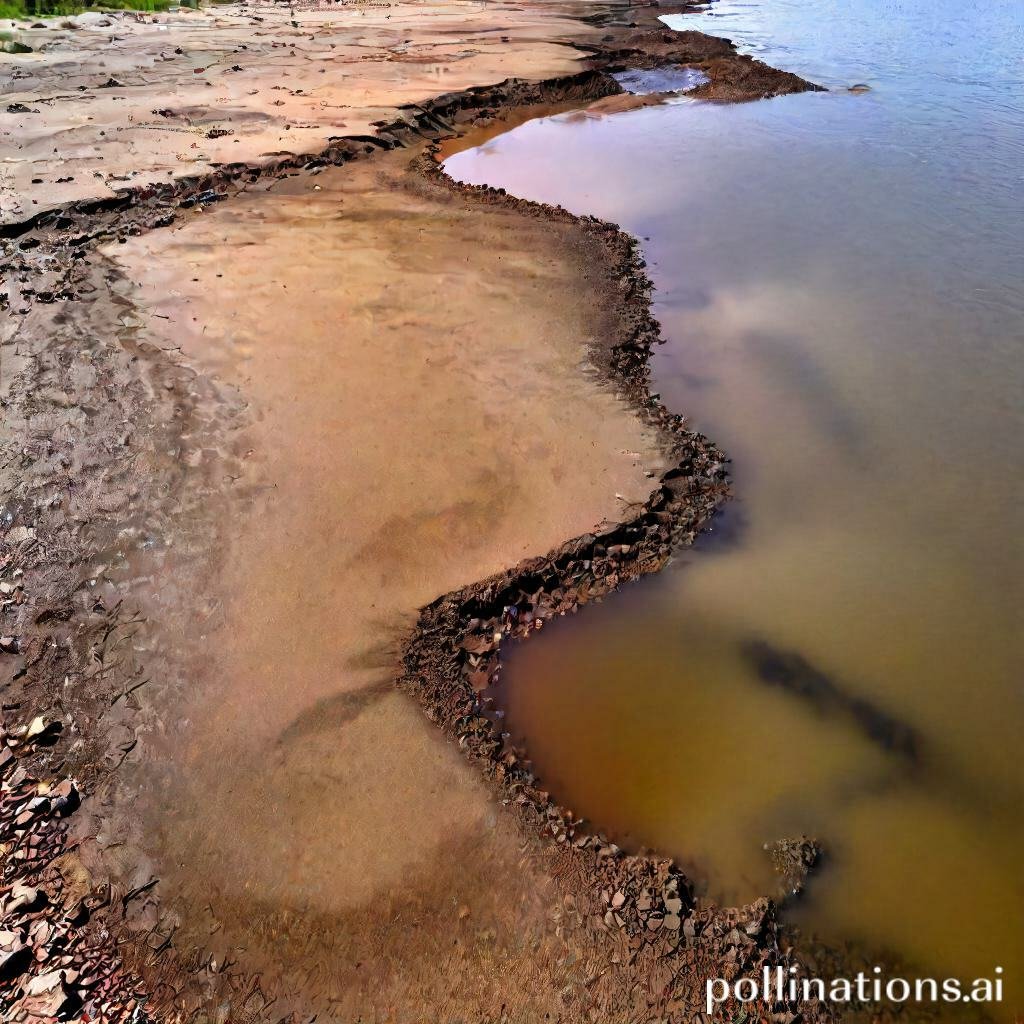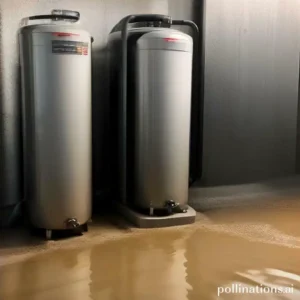
Sediment buildup in water heaters can reduce efficiency and lead to malfunctions. Therefore, essential to understand how to effectively remove sediment from your water heater to ensure optimal performance.
Additionally, we will ponder the steps to take in case of a water heater emergency, including the proper shutdown procedures to prevent further damage or potential hazards. By adhering to these guidelines, you can maintain a well-functioning water heater and ensure the safety of your home.
Sediment Removal Procedures
In this section, we will discuss the importance of sediment removal in water heaters and provide a step-by-step guide on how to effectively remove sediment buildup. We will also share some useful tips to prevent future sediment buildup, ensuring the longevity and efficiency of your water heater.
1. Clarification of sediment buildup in water heaters
Sediment buildup is a common issue in water heaters that can lead to various problems. Over time, minerals and other sediments present in the water supply settle at the bottom of the tank. This sediment buildup can reduce the heating efficiency, decrease the available hot water capacity, and even cause corrosion or other damage to the tank.
Integral to understand the causes and consequences of sediment buildup to effectively address the issue and maintain the optimal performance of your water heater.
2. Step-by-step guide for draining the water heater tank to remove sediment buildup
To remove sediment buildup from your water heater tank, follow these steps:
- Turn off the power: Before starting any maintenance procedure, ensure that the power supply to the water heater is turned off. This will prevent any accidents or electrical hazards.
- Locate the drain valve: The drain valve is usually located at the bottom of the water heater tank. Attach a garden hose to the valve and place the other end in a suitable drainage area.
- Open the drain valve: Slowly open the drain valve and allow the water to flow out through the garden hose. Be cautious as the water might be hot.
- Flush the tank: Once the water stops flowing, turn on the cold water supply to the heater. This will create a flushing action that helps dislodge and remove any remaining sediment.
- Close the drain valve: After the tank has been flushed, close the drain valve tightly.
- Turn on the power: Once the tank is refilled, turn on the power supply to the water heater and allow it to heat the water.
3. Tips for preventing sediment buildup in the future
To minimize sediment buildup and extend the lifespan of your water heater, consider the following tips:
- Regular maintenance: Perform regular maintenance tasks such as flushing the tank and checking the anode rod to prevent sediment accumulation.
- Water softener: If your water supply has high mineral content, consider installing a water softener to reduce sediment buildup.
- Water filtration: Use a water filtration system to remove impurities and sediments from the water supply before it enters the heater.
- Temperature adjustment: Set the temperature of your water heater to a moderate level to minimize sediment formation.
| Causes of Sediment Buildup | Consequences of Sediment Buildup |
|---|---|
| Minerals in water supply: Minerals like calcium and magnesium settle at the bottom of the tank. | Reduced heating efficiency: Sediment acts as an insulator, reducing the heating efficiency of the water heater. |
| Corrosion: Sediment buildup can cause corrosion or damage to the tank, leading to leaks or other issues. | Decreased hot water capacity: Sediment occupies space in the tank, reducing the available hot water capacity. |
Water Heater Emergency Shutdown Procedures
1. Reasons for emergency shutdowns
In certain situations, it may be necessary to perform an emergency shutdown of a water heater. This could be due to various reasons, such as:
- Gas leaks
- Malfunctioning thermostat
- Overheating
- Water leaks
2. Step-by-step guide for shutting down a water heater in case of emergency
When faced with an emergency situation involving a water heater, vital to know how to safely shut it down. Follow these steps:
- Turn off the power: Locate the power supply to the water heater and turn it off. This may involve flipping a switch or shutting off the circuit breaker.
- Turn off the gas supply: If your water heater operates on gas, find the gas supply valve and turn it off. This will help prevent any potential gas leaks.
- Turn off the water supply: Locate the water supply valve connected to the water heater and shut it off. This will stop the flow of water into the unit.
- Drain the tank: Open the drain valve on the water heater to allow any remaining water to drain out. This will help prevent water damage or further issues.
3. Tips for preventing emergency situations
Meanwhile emergencies can happen unexpectedly, there are steps you can take to reduce the likelihood of a water heater emergency. Consider the following tips:
- Maintain regular maintenance: Schedule regular inspections and maintenance for your water heater to catch any potential issues before they escalate.
- Monitor temperature settings: Keep an eye on the temperature settings of your water heater to prevent overheating.
- Check for leaks: Regularly inspect your water heater for any signs of leaks, such as puddles or dampness around the unit.
- Be cautious with DIY repairs: If you notice any problems with your water heater, it’s best to consult a professional rather than attempting to fix it yourself.
Signs of Sediment Buildup
Sediment buildup in a water heater can cause various issues and it’s important to be aware of the signs that indicate its presence. By promptly addressing sediment buildup, you can ensure the efficiency and longevity of your water heater.
1. Water Discoloration and Murky Appearance
One of the most noticeable signs of sediment buildup is a change in the color and clarity of your tap water. If you notice a brownish or murky appearance when using hot water, it’s likely that sediment has accumulated in your water heater. This sediment can come from minerals and other impurities present in the water supply.
2. Reduced Water Pressure
Another common sign of sediment buildup is a decrease in water pressure. As sediment accumulates in the water heater tank, it can restrict the flow of water through the pipes, resulting in reduced pressure. If you notice a significant drop in water pressure, especially when using hot water, sediment buildup could be the culprit.
3. Strange Noises
Sediment buildup can also lead to unusual noises coming from your water heater. As water is heated, the sediment can create a layer at the bottom of the tank. When the heating element operates, it causes the water to bubble and boil around the sediment, resulting in popping or rumbling sounds. These noises are a clear indication that sediment has accumulated and needs to be addressed.
4. Decreased Water Heater Efficiency
Over time, sediment buildup can significantly reduce the efficiency of your water heater. The layer of sediment acts as an insulator, preventing the heating element from effectively transferring heat to the water. This can lead to longer heating times and increased energy consumption. Regular monitoring and maintenance can help prevent efficiency loss and save you money on utility bills.
5. Increased Risk of Damage and Failure
If sediment buildup is left unaddressed, it can cause serious damage to your water heater. The sediment can corrode the tank and other components, leading to leaks and even complete failure. By detecting and addressing sediment buildup promptly, you can avoid costly repairs or the need for a new water heater.
Regular monitoring of your water heater and proactive maintenance can help prevent sediment buildup. Flushing the tank periodically to remove accumulated sediment is an effective way to maintain optimal performance. Consult your water heater manufacturer’s guidelines or seek professional assistance for proper maintenance procedures.

Regular Maintenance Procedures
Regular maintenance is crucial for ensuring the longevity and optimal performance of water heaters. By abiding by a step-by-step guide, you can easily perform regular maintenance on your water heater and avoid potential issues down the line. Here is a breakdown of the recommended procedures and frequency for regular maintenance:
1. Importance of Regular Maintenance for Water Heaters
Regular maintenance plays a key role in preserving the efficiency and functionality of your water heater. It helps prevent sediment buildup, corrosion, and other issues that can lead to decreased performance and higher energy costs. By investing a little time and effort into regular maintenance, you can extend the lifespan of your water heater and ensure a continuous supply of hot water.
2. Step-by-Step Guide for Performing Regular Maintenance on Water Heaters
To perform regular maintenance on your water heater, follow these simple steps:
- Shut off the power: Before beginning any maintenance tasks, make sure to turn off the power supply to the water heater. This will prevent any accidents or injuries.
- Drain the tank: Connect a hose to the drain valve of the water heater and carefully drain the tank to remove any accumulated sediment or debris. This will improve the efficiency of your water heater and prevent clogs.
- Check the pressure relief valve: Inspect the pressure relief valve for any signs of leakage or malfunction. If necessary, replace it to ensure proper operation.
- Inspect the anode rod: The anode rod helps prevent corrosion inside the tank. Check the condition of the anode rod and replace it if it is heavily corroded.
- Check the temperature and pressure: Ensure that the temperature and pressure settings on your water heater are within the recommended range. Adjust as necessary.
- Flush the tank: Flushing the tank annually can help remove any remaining sediment and maintain optimal performance.
- Restart the water heater: Once you have completed the maintenance tasks, turn the power supply back on and allow the water heater to heat up.
3. Recommended Frequency for Regular Maintenance
It is generally recommended to perform regular maintenance on your water heater at least once a year. Albeit, if you live in an area with hard water or notice any signs of decreased performance, more frequent maintenance may be necessary. Regular maintenance will keep your water heater running smoothly and help you avoid costly repairs or replacements in the future.
| Topic | Frequency |
|---|---|
| Draining the tank | Once a year |
| Checking the pressure relief valve | Once a year |
| Inspecting the anode rod | Every 2-3 years |
| Flushing the tank | Once a year |

DIY vs Professional Assistance
Relating to sediment removal and emergency shutdown procedures, it’s important to consider whether to tackle the task yourself or seek professional assistance. Here, we discuss the benefits of hiring a professional and the risks associated with attempting these procedures without professional help.
1. When to Seek Professional Assistance
Removing sediment and performing emergency shutdown procedures can be complex and potentially dangerous. It is advisable to seek professional assistance in the following situations:
- When you lack the necessary knowledge and experience to safely and effectively perform the procedures.
- When the sediment buildup is extensive or in hard-to-reach areas.
- When the emergency shutdown procedure requires specialized equipment or expertise.
2. Benefits of Hiring a Professional
There are several advantages to hiring a professional for sediment removal and emergency shutdown procedures:
- Expertise: Professionals have the necessary knowledge and experience to efficiently handle these tasks.
- Efficiency: Professionals use specialized equipment and techniques to ensure thorough and quick sediment removal.
- Safety: Professionals are trained to follow proper safety protocols, reducing the risk of accidents or injuries.
- Prevention: Professionals can identify underlying issues that may contribute to sediment buildup, helping to prevent future problems.
3. Risks of Attempting Procedures Without Professional Assistance
In the course of DIY approaches may seem cost-effective, there are risks involved in attempting sediment removal and emergency shutdown procedures without professional assistance:
- Ineffectiveness: Without proper knowledge and equipment, DIY attempts may not effectively remove all sediment, leading to recurring issues.
- Danger: Handling emergency shutdown procedures without expertise can be hazardous, potentially causing damage to equipment or harm to individuals.
- Costly Mistakes: Incorrectly performed procedures can result in expensive repairs or replacements.
- Time-consuming: DIY attempts may take longer to complete, causing unnecessary downtime.
To make an informed decision, consider the complexity of the task, your own expertise, and the potential risks involved. Seeking professional assistance ensures a thorough and efficient sediment removal process, minimizing any further complications or hazards.
| Data | Professional Assistance | DIY |
|---|---|---|
| Expertise | High | Varies |
| Efficiency | High | Varies |
| Safety | High | Varies |
| Cost | Costly | Potentially lower |
Bottom Line
Proper sediment removal and water heater emergency shutdown procedures are crucial for maintaining the efficiency and longevity of your water heater. Neglecting these tasks can lead to costly repairs and even dangerous situations. Regularly flushing your water heater to remove sediment buildup can improve its performance and prevent damage to the tank and heating elements. Additionally, knowing how to shut off your water heater in case of an emergency can prevent further damage and ensure the safety of your home and family. By heeding these simple steps, you can extend the life of your water heater and avoid unnecessary expenses.
Remember, prevention is key in terms of water heater maintenance. Don’t wait until a problem arises to take action. Make sediment removal and emergency shutdown procedures a regular part of your home maintenance routine to keep your water heater running smoothly for years to come.
Read More:
1. Diy Sediment Removal Without Draining Water Heater
2. Role Of Temperature Settings In Sediment Buildup










